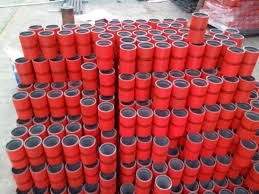- Afrikaans
- Albanian
- Amharic
- Arabic
- Armenian
- Azerbaijani
- Basque
- Belarusian
- Bengali
- Bosnian
- Bulgarian
- Catalan
- Cebuano
- Corsican
- Croatian
- Czech
- Danish
- Dutch
- English
- Esperanto
- Estonian
- Finnish
- French
- Frisian
- Galician
- Georgian
- German
- Greek
- Gujarati
- Haitian Creole
- hausa
- hawaiian
- Hebrew
- Hindi
- Miao
- Hungarian
- Icelandic
- igbo
- Indonesian
- irish
- Italian
- Japanese
- Javanese
- Kannada
- kazakh
- Khmer
- Rwandese
- Korean
- Kurdish
- Kyrgyz
- Lao
- Latin
- Latvian
- Lithuanian
- Luxembourgish
- Macedonian
- Malgashi
- Malay
- Malayalam
- Maltese
- Maori
- Marathi
- Mongolian
- Myanmar
- Nepali
- Norwegian
- Norwegian
- Occitan
- Pashto
- Persian
- Polish
- Portuguese
- Punjabi
- Romanian
- Russian
- Samoan
- Scottish Gaelic
- Serbian
- Sesotho
- Shona
- Sindhi
- Sinhala
- Slovak
- Slovenian
- Somali
- Spanish
- Sundanese
- Swahili
- Swedish
- Tagalog
- Tajik
- Tamil
- Tatar
- Telugu
- Thai
- Turkish
- Turkmen
- Ukrainian
- Urdu
- Uighur
- Uzbek
- Vietnamese
- Welsh
- Bantu
- Yiddish
- Yoruba
- Zulu
what are the differences between casing and tubing?
Understanding the Differences Between Casing and Tubing in Oil and Gas Drilling
In the realm of oil and gas drilling, two critical components play pivotal roles in ensuring the safety and efficiency of extracting hydrocarbons casing and tubing. While they might seem similar at first glance, they serve distinct purposes within the wellbore system. Understanding the differences between casing and tubing is essential for anyone involved in the drilling industry, from engineers to field personnel.
What is Casing?
Casing is a series of steel pipes installed within the wellbore. Once drilling reaches a certain depth, casing is placed to stabilize the well and protect it from external pressures and environmental contaminants. The casing is cemented in place, which creates a barrier against groundwater and maintains the structural integrity of the well. This is crucial in preventing blowouts, where high-pressure formations could otherwise burst into the wellbore.
There are several types of casing, each designed for specific conditions 1. Surface Casing The first layer, typically installed to protect fresh water zones and prevent surface contamination. It usually extends from the ground level to several hundred feet into the ground. 2. Intermediate Casing Installed at greater depths to protect against high-pressure formations and to reinforce the wellbore as drilling progresses deeper. This type of casing may also isolate various geological formations. 3. Production Casing The final casing installed, which allows for the production of oil or gas. This casing is cemented into place to seal off the well and protect it during production operations.
What is Tubing?
Conversely, tubing is a smaller diameter pipe that is installed within the casing after the well is completed. It serves a different purpose, primarily focusing on the efficient flow of hydrocarbons from the reservoir to the surface. Tubing is designed to facilitate the production process and is usually much thinner and lighter than casing.
Unlike casing, which is permanently cemented in place, tubing can be removed and replaced over the life of the well. Tubing strings are vital for injecting fluids such as water or gas into the reservoir, enhancing production rates through methods like water flooding or gas lift. Furthermore, tubing is often equipped with various devices, such as packers and safety valves, to control the flow of fluids and ensure safe operations.
what are the differences between casing and tubing?

Key Differences
1. Functionality The most significant difference lies in their respective functions. Casing primarily provides structural support and well control, while tubing is focused on the transport of production fluids.
2. Installation Process Casing is installed during the drilling phase and is cemented into place for stability, while tubing is inserted after the well is completed and can be changed or repaired as needed.
3. Material and Design Casing pipes are thicker and designed to withstand high external pressures. Tubing pipes, being thinner, are designed for the internal pressures of the fluids they carry.
4. Diameter Casing typically has a larger diameter compared to tubing. The casing forms the outer structure of the well, whereas the tubing operates internally.
5. Maintenance and Life Cycle Casing remains in the well for its lifetime, protecting it from external elements. Tubing, on the other hand, may require maintenance, and its lifespan can be shorter due to wear from the produced fluids, necessitating replacement.
Conclusion
Understanding the differences between casing and tubing is crucial for the efficient and safe extraction of hydrocarbons in the oil and gas industry. By recognizing the unique roles each component plays, professionals can ensure that drilling operations are conducted effectively, safeguarding both the environment and the integrity of the well. This knowledge not only enhances operational efficiency but ultimately contributes to the sustainability of energy resources.
-
Tubing Pup Joints: Essential Components for Oil and Gas OperationsNewsJul.10,2025
-
Pup Joints: Essential Components for Reliable Drilling OperationsNewsJul.10,2025
-
Pipe Couplings: Connecting Your World EfficientlyNewsJul.10,2025
-
Mastering Oilfield Operations with Quality Tubing and CasingNewsJul.10,2025
-
High-Quality Casing Couplings for Every NeedNewsJul.10,2025
-
Boost Your Drilling Efficiency with Premium Crossover Tools & Seating NipplesNewsJul.10,2025







